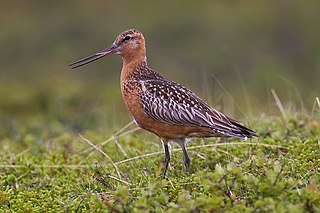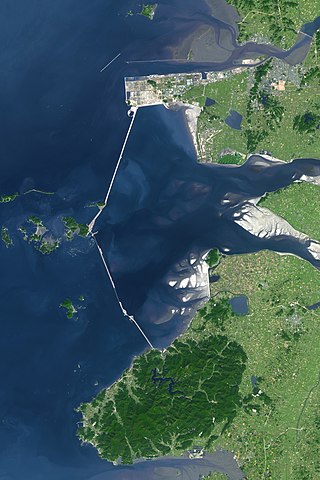| Birds Korea | |
| Hangul | 새와생명의터 |
|---|---|
| Hanja | 새와生命의터 |
| Revised Romanization | Saewa Saengmyeong-eui Teo |
| McCune–Reischauer | Saewa Saengmyŏng'ŭi T'ŏ |
| Literally "Site of Birds and Life" | |
Birds Korea is an organisation dedicated to the conservation of birds and their habitats in South Korea and the wider Yellow Sea Eco-region.
Founded in 2004 and based in the port city of Busan,Birds Korea has regularly updated websites in both English and Korean. Birds Korea works on a wide range of conservation projects,including research,advocacy,and education programs. As such,the organisation has received wide domestic and international coverage of their work in both online and mainstream media,on issues ranging from Korean outbreaks of H5N1 avian influenza (2005–2006),to the impacts of the Taean oil spill (2007),to pilot restoration work at the Mokpo Namhang urban wetland (2007–2008),and to concerns over avian biodiversity threatened by the proposed Korean Grand Canal Project (2008).
Most notably,in 2006 Birds Korea developed the Saemangeum Shorebird Monitoring Program (SSMP) in partnership with the Australasian Wader Studies Group,monitoring the impacts of the world's largest known coastal reclamation (the 40,100 ha Saemangeum) on populations of migratory shorebirds. Prior to seawall closure in April 2006,Saemangeum was considered to be the single most important shorebird site in the Yellow Sea (Barter,2002). The SSMP documented (following seawall closure) very major declines of several species of shorebirds within the Saemangeum reclamation area and adjacent wetlands (Moores et al.,2006;Rogers et al.,2006;Moores et al.,2007),and through further coordinated survey effort (e.g. the 2008 Birds Korea National Shorebird Survey),declines of species such as spoon-billed sandpiper Eurynorhynchus pygmeus (critically endangered) and great knot Calidris tenuirostris at the national level too. SSMP and other shorebird data gathered in 2008 is to be published in time for the Tenth Conference of the Parties of the Ramsar Convention (to be held in Changwon City,South Korea,between October 28 and November 4,2008),to inform and influence the increasingly urgent debate on the need to better conserve the intertidal habitats and biodiversity of the Yellow Sea.

The Yellow Sea, also known as North Sea, is a marginal sea of the Western Pacific Ocean located between mainland China and the Korean Peninsula, and can be considered the northwestern part of the East China Sea.

Waders or shorebirds are birds of the order Charadriiformes commonly found wading along shorelines and mudflats in order to forage for food crawling or burrowing in the mud and sand, usually small arthropods such as aquatic insects or crustaceans. The term "wader" is used in Europe, while "shorebird" is used in North America, where "wader" may be used instead to refer to long-legged wading birds such as storks and herons.

The crab-plover or crab plover is a bird related to the waders, but sufficiently distinctive to merit its own family Dromadidae. Its relationship within the Charadriiformes is unclear, some have considered it to be closely related to the thick-knees, or the pratincoles, while others have considered it closer to the auks and gulls. It is the only member of the genus Dromas and is unique among waders in making use of ground warmth to aid incubation of the eggs.

The bar-tailed godwit is a large and strongly migratory wader in the family Scolopacidae, which feeds on bristle-worms and shellfish on coastal mudflats and estuaries. It has distinctive red breeding plumage, long legs, and a long upturned bill. Bar-tailed godwits breed on Arctic coasts and tundra from Scandinavia to Alaska, and overwinter on coasts in temperate and tropical regions of Australia and New Zealand. The migration of the subspecies Limosa lapponica baueri across the Pacific Ocean from Alaska to New Zealand is the longest known non-stop flight of any bird, and also the longest journey without pausing to feed by any animal. The round-trip migration for this subspecies is over 29,000 km (18,020 mi).

The China–Australia Migratory Bird Agreement (CAMBA) is a bilateral treaty between Australia and China that aims to protect migratory birds and their environment between the two countries. Throughout all six Articles, the treaty defines what a migratory bird is, outlines key prohibitions for both contracting parties and determines the responsibilities of both nations to protect migratory birds and their habitats. The CAMBA was first developed on 20 October 1986, and came into force on 1 September 1988. Eighty-one bird species are listed in the agreement, as shown in the CAMBA Annex listed below.

The falcated duck or falcated teal is a gadwall-sized dabbling duck from the east Palearctic.

Farewell Spit is a narrow sand spit at the northern end of the Golden Bay, in the South Island of New Zealand. The spit includes around 25 km (16 mi) of stable land and another 5 km (3.1 mi) of mobile sand spit running eastwards from Cape Farewell, the northern-most point of the South Island. Farewell Spit is the longest sand spit in New Zealand, and is a legally protected Nature Reserve. The area is designated as a Ramsar wetland site and an East Asian–Australasian Flyway Shorebird Network site. Farewell Spit is administered by the New Zealand Department of Conservation as a seabird and wildlife reserve. Apart from a small area at the base of the spit, it is closed to the public except through organised tours. Conservation initiatives are in progress towards eliminating mammalian predators from Farewell Spit, including a proposal for a predator-proof fence.

Kittlitz's plover is a small shorebird in the family Charadriidae that breeds near coastal and inland saltmarshes, sandy or muddy riverbanks or alkaline grasslands with short vegetation. It is native to much of Sub-Saharan Africa, the Nile Delta and Madagascar. It is thought to be mainly polygamous and has monomorphic plumage.

Eighty Mile Beach also spelled Eighty-mile Beach or 80-mile Beach, and formerly called 90-mile Beach, lies along the north-west coast of Western Australia about half-way between the towns of Broome and Port Hedland. It is a beach some 220 kilometres (140 mi) in length, forming the coastline where the Great Sandy Desert approaches the Indian Ocean. It is one of the most important sites for migratory shorebirds, or waders, in Australia, and is recognised as a wetland of international importance under the Ramsar Convention on Wetlands.

The spoon-billed sandpiper is a small wader which breeds on the coasts of the Bering Sea and winters in Southeast Asia. This species is highly threatened, and it is said that since the 1970s the breeding population has decreased significantly. By 2000, the estimated breeding population of the species was 350–500.

Saemangeum is an estuarine tidal flat on the coast of the Yellow Sea in South Korea. It was dammed by the government of South Korea's Saemangeum Seawall Project, completed in 2006, after a long fight between the government and environmental activists, and is scheduled to be converted into either agricultural or industrial land. Prior to 2010, it had played an important role as a habitat for migratory birds.

The Saemangeum Seawall, on the south-west coast of the Korean peninsula, is the world's longest man-made dyke, measuring 33 kilometres (21 mi). It runs between two headlands, and separates the Yellow Sea and the former Saemangeum estuary.

The East Asian–Australasian Flyway is one of the world's great flyways of migratory birds. At its northernmost it stretches eastwards from the Taimyr Peninsula in Russia to Alaska. Its southern end encompasses Australia and New Zealand. Between these extremes the flyway covers much of eastern Asia, including China, Japan, Korea, South-East Asia and the western Pacific. The EAAF is home to over 50 million migratory water birds from over 250 different populations, including 32 globally threatened species and 19 near threatened species. It is especially important for the millions of migratory waders or shorebirds that breed in northern Asia and Alaska and spend the non-breeding season in South-East Asia and Australasia.

The Far Eastern curlew is a large shorebird most similar in appearance to the long-billed curlew, but slightly larger. It is mostly brown in color, differentiated from other curlews by its plain, unpatterned brown underwing. It is not only the largest curlew but probably the world's largest sandpiper, at 60–66 cm (24–26 in) in length and 110 cm (43 in) across the wings. The body is reportedly 565–1,150 g (1.246–2.535 lb), which may be equaled by the Eurasian curlew. The extremely long bill, at 12.8–20.1 cm (5.0–7.9 in) in length, rivals the bill size of the closely related long-billed curlew as the longest bill for a sandpiper.

The Miranda Naturalists' Trust is a charitable trust, that established and maintains the Miranda Shorebird Centre, located at Pūkorokoro / Miranda on the western shore of the Firth of Thames on the North Island of New Zealand. The Miranda Naturalists' Trust (MNT) was formed in 1975 to encourage people to visit the coastline and appreciate its wide range of flora and fauna. The trust promotes education and public awareness of coastal ecology, shorebird research and conservation. Work done by the trust, to increase knowledge of shorebird migration, includes bird banding, research and data exchange. The Shorebird Centre has information displays on waders and a library and helps raise funds for the trust's work through their shop sales and visitor accommodation.

A water bird, alternatively waterbird or aquatic bird, is a bird that lives on or around water. In some definitions, the term water bird is especially applied to birds in freshwater ecosystems, although others make no distinction from seabirds that inhabit marine environments. Some water birds are more terrestrial while others are more aquatic, and their adaptations will vary depending on their environment. These adaptations include webbed feet, beaks, and legs adapted to feed in the water, and the ability to dive from the surface or the air to catch prey in water.
The Orielton Lagoon is a shallow dystrophic lagoon located west of Sorell in south east Tasmania, Australia.
The East Atlantic Flyway is a migration route used by about 90 million birds annually, passing from their breeding areas in the United States, Canada, Greenland, Iceland, Siberia and northern Europe to wintering areas in western Europe and on to southern Africa. It is one of the eight major flyways used by waders and shorebirds. The migrants follow a great circle route, which is shorter although more challenging. When avoiding the barriers created by the Sahara Desert and Atlas Mountains, European honey buzzards were found to overcompensate for the winds they expected to encounter, and take a longer route than was necessary.

The Sonny Bono Salton Sea National Wildlife Refuge is located in the Imperial Valley of California, 40 miles (64 km) north of the Mexican border. Situated at the southern end of the Salton Sea, the refuge protects one of the most important nesting sites and stopovers along the Pacific Flyway. Despite its location in the Colorado Desert, a subdivision of the larger Sonoran Desert, the refuge contains marine, freshwater, wetland, and agricultural habitats which provide sanctuary for hundreds of birds and wetland species, including several that have been listed as endangered or sensitive by the U.S. Fish and Wildlife Service.

BirdLife Australia is a not-for-profit organisation advocating for native birds and the conservation of their habitats across Australia.